Organocatalytic asymmetric [3 + 3] annulation of isatin N,N'-cyclic azomethine imines with enals: Efficient approach to functionalized spiro N-heterocyclic oxindoles
2021-05-14BoqiGuShuxiaoWuHuiXuWulinYangZhixiangLiuWeipingDeng
Boqi Gu,Shuxiao Wu,Hui Xu,Wulin Yang,Zhixiang Liu*,Weiping Deng,*
a College of Pharmaceutical Sciences, Zhejiang Chinese Medical University, Hangzhou 310053, China
b Shanghai Key Laboratory of New Drug Design, School of Pharmacy, East China University of Science and Technology, Shanghai 200237, China
ABSTRACT An unprecedented chiral secondary amine-catalyzed[3+3]annulation of isatin N,N'-cyclic azomethine imines with α,β-unsaturated aldehydes was developed.This strategy allowed the construction of structurally novel spiro N-heterocyclic oxindole derivatives in good yields (up to 91%) and good to excellent enantioselectivities(up to >99%ee),albeit with modest diastereoselectivities(up to 3.1:1 dr).
Keywords:Chiral secondary amine[3 + 3] Annulation Azomethine imines Spiro N-heterocyclic oxindole Asymmetric synthesis
Optically active 3,3-disubstituted oxindoles are identified as privileged structures in natural products and pharmaceuticals[1].Among those structures,spiro N-heterocyclic oxindoles fused with a five-or six-membered ring system at the C3-position have drawn considerable attention from both synthetic and medicinal chemists because it contains two pharmaceutical and biological characteristics of both heterocycle and oxindole motifs [2].
Given the significance of such skeleton, several elegant and efficient approaches have been developed for constructing 3-spiro N-heterocyclic oxindoles in the last ten years [3–5].Among the reported methods,the asymmetric 1,3-dipolar cycloaddition of N,N'-cyclic azomethine imines are one of the most effective and direct approaches for the construction of chiral 3-spiro heterocyclic oxindoles [6].In this context, Wang and Feng group independently identified the azomethine imines as a versatile and robust building block in the asymmetric 1,3-dipolar cycloaddition for the construction of 3-spiroheterocyclicoxindoles.Despite the elegant work, the substrates are still limited:1) azomethine imines are prepared by the condensation of pyrazolidin-3-one with aldehydes; 2) the dipolarophiles are limited to 2-oxoindolin-3-ylidene (Scheme 1) [7,8].
Recently, Wang and co-workers designed a new isatin N,N'-cyclic azomethine imine synthon, which performed unexpected reactivity in the [3+2] annulation and Michael addition with electron-deficient alkenes (Scheme 2) [9,10].However, the asymmetric version of the above protocol was not achieved, or only poor enantioselectivity was obtained.In view of the limitations of current methods and the importance of 3-spiro heterocyclic oxindoles,we envisaged that chiral 3-spiro heterocyclic oxindoles could be obtained via the asymmetric annulation of isatin N,N'-cyclic azomethine imines with enals in the presence of chiral secondary amine catalysts (Scheme 2) [11].
In order to verify our assumption, we investigated the asymmetric annulation between model substrates isatin N,N'-cyclic azomethine imine 1a and cinnamaldehyde 2a in the presence of TMS-protected secondary amine catalyst C1 (Fig.1).Surprisingly, an unexpected C-N-N [3+3] annulation process was observed, which was different from previously reported reaction mode,and corresponding product 3aa was obtained in good yield (72%), modest diastereoselectivity (1.2:1) and high enantioselectivity (87%/80%ee)(Table 1,entry 1).Encouraged by this promising result,various chiral amine catalysts(C –C5,Fig.1)were screened(entries 2–5).Gratifyingly,bulkier amine catalyst C2 exhibited the optimal reaction outcome, both yield (81%) and stereoselectivity(1.7:1 dr, 91%/90% ee) were improved (entry 2).
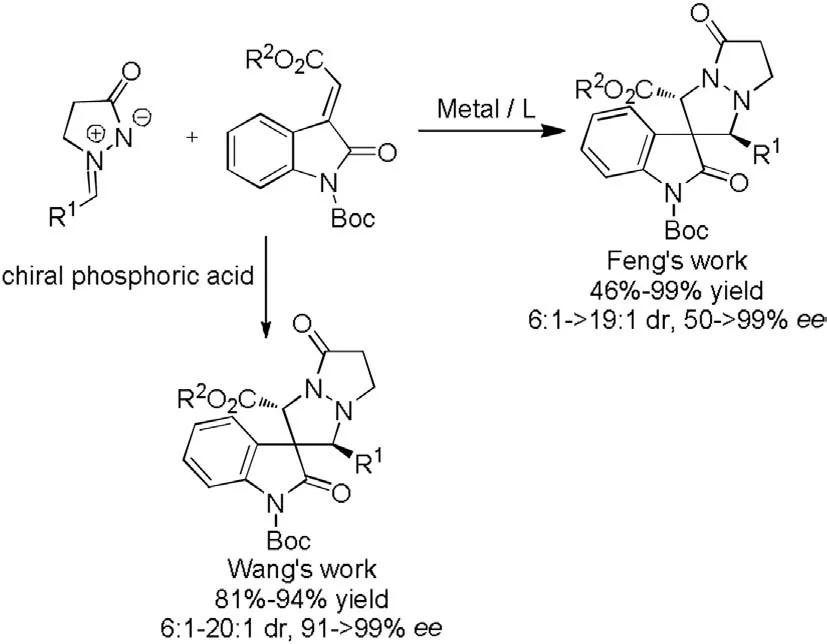
Scheme 1.Asymmetric construction of spiro N-heterocyclic oxindole derivatives by N,N'-cyclic azomethine imines.
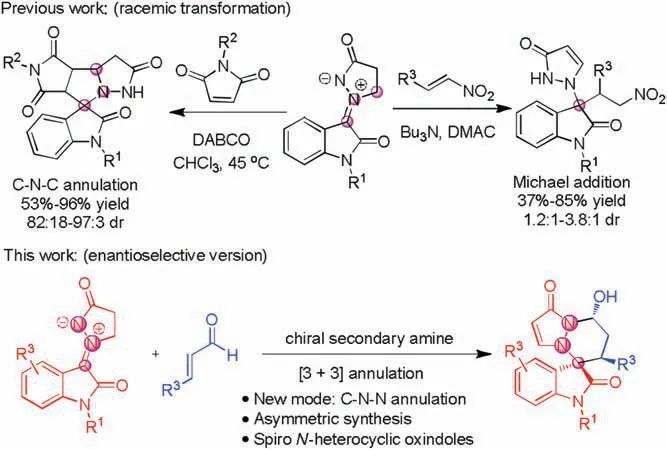
Scheme 2.Synthetic applications of isatin N,N'-cyclic azomethine imine.
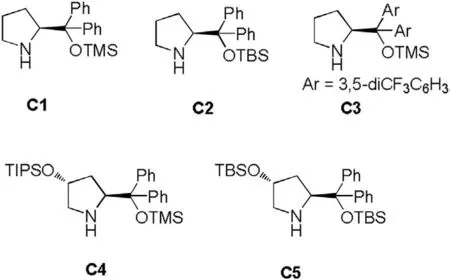
Fig.1.Chiral secondary-amine catalysts investigated in this reaction.
Subsequently, by varying the base for this reaction, no better results could be obtained compared with Et3N (Table 2, entries 1–6).Then,the effect of solvents was tested.When using CH2Cl2as solvent, the yield was slightly reduced (80%), but the stereoselectivity was significantly improved(1.9:1 dr, 96%/95%ee)(entry 7).DMF reduced the reaction time greatly (12 h), but the yield (52%) and stereoselectivity (1:1.5 dr, 66%/76% ee) were not ideal(entry 13).Other solvents, such as CH3CN, CH3OH, THF, Et2O and toluene led to a significant decrease in reactivity due to the reduced solubility of isatin N,N'-cyclic azomethine imine 1a(entries 8–12).In addition, investigation of the reaction temperature showed that CH2Cl2at 0gave better result (82%yield,2.1:1 dr, 98%/96% ee) in comparison with CHCl3(entries 14 and 15).
With the optimal conditions in hand, the substrate scope of isatin N,N0-cyclic azomethine imines and α,β-unsaturated aldehydes was subsequently investigated.Firstly, various protecting groups on substituted isatin N,N0-cyclic azomethine imines wereexplored with cinnamaldehyde 2a (Scheme 3).N-Allyl protected substrate 1b afforded the [3+3] cycloadduct in good yield with excellent enantioselectivity (85%,1.3:1 dr,97%/95%ee).Due to the influence of high steric hindrance and poor solubility, N-C(Ph)3protected 1c only afforded the trace amount of product.On the other hand, the electron-withdrawing group Boc-protected 1d showed no reactivity.Then various electron-donating or electronwithdrawing groups at 5-,6-,7-positions on the indole ring were also tolerated, the corresponding products could be obtained in good yields, while electron-withdrawing substitutions on the indole ring gave lower yield and decreased enantioselectivity compared with electron-donating substitutions (3ea –3ka).
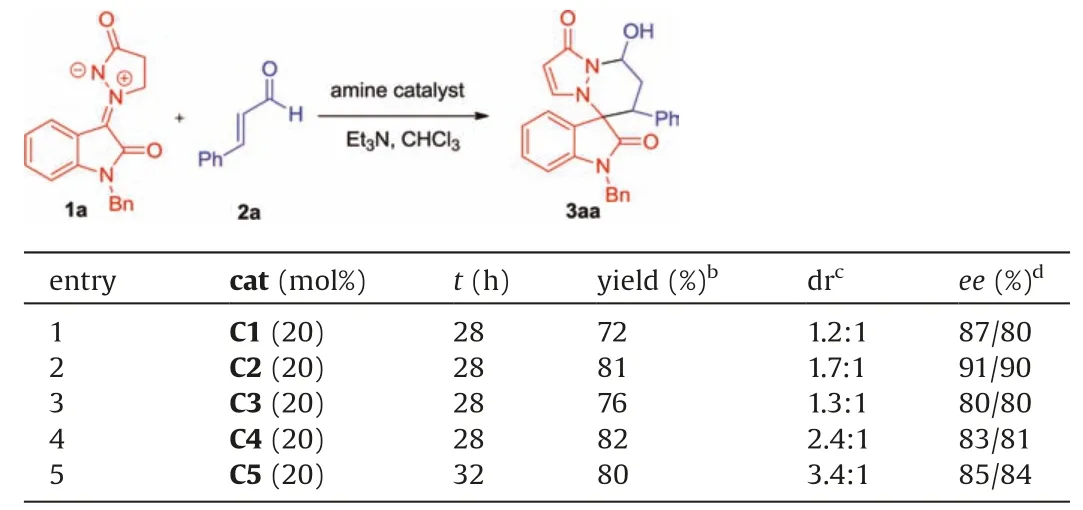
Table 1 Screenings of catalysts.a
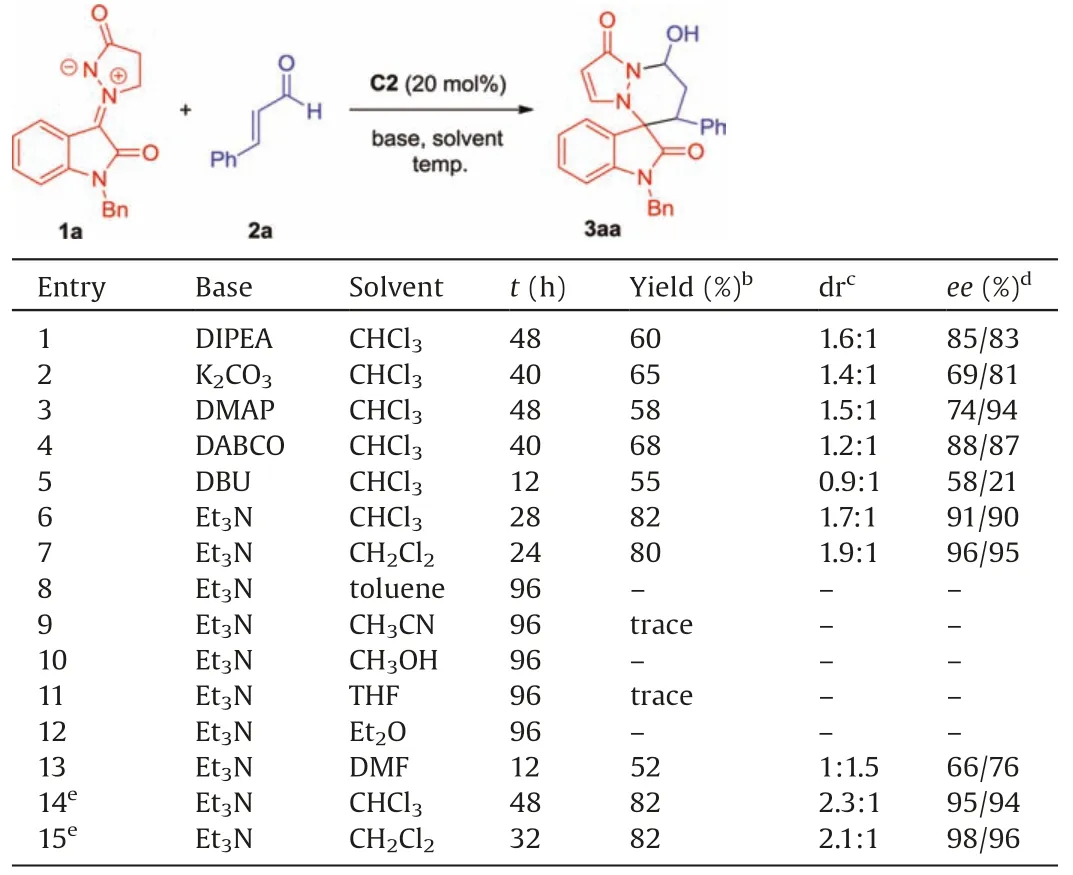
Table 2 Optimization of reaction conditions.a
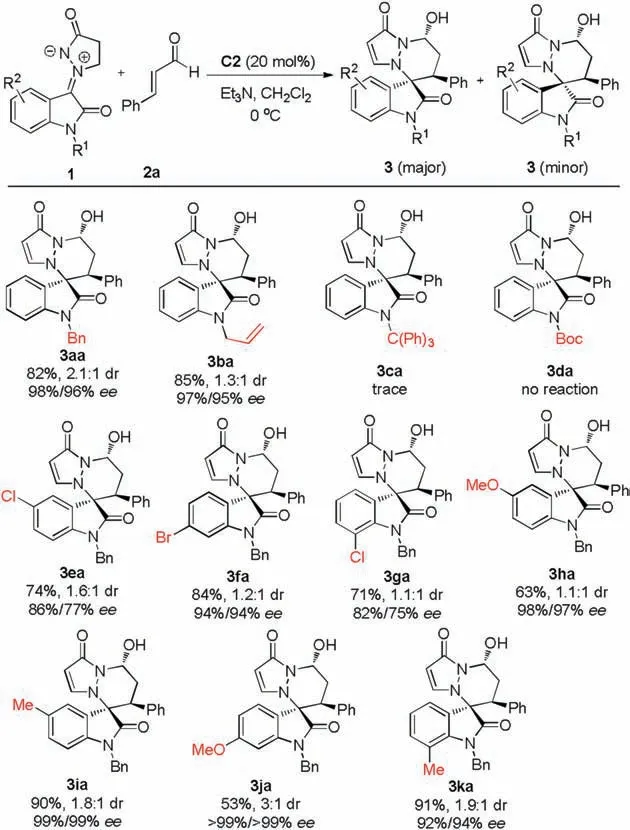
Scheme 3.Scope of isatin N,N'-cyclic azomethine imines 1.General reaction conditions: 1 (0.20 mmol), 2 (0.30 mmol), C2 (0.04 mmol), Et3N (0.04 mmol),CH2Cl2(2.0 mL), 0Isolated yields for two diastereomers; dr values were determined by 1H NMR spectroscopy; ee values were determined by chiral HPLC analysis.
Subsequently, the potential of this [3+3] annulation with a variety of α,β-unsaturated aldehydes was further explored(Scheme 4).The reaction all proceeded smoothly, good yields and moderate to excellent enantioselectivities were obtained with the aryl rings bearing electron-withdrawing Cl, Br, NO2or-donating Me, OMe substitutions (3ab –3ag, 3ai–3ak).Furthermore, heteroaromatic aldehydes such as pyridyl and furyl were also tolerated under optimal conditions(3ah,3al).In addition,the absolute configuration of 3ab (major diastereoisomer) was determined as (3R, 6'S, 8'R) by X-ray crystallographic analysis,and the absolute configuration of minor diastereoisomer was determined as(3S, 6'S, 8'R) by X-ray crystallographic analysis ( for details see the Supporting information).Notably, aromatic aldehyde 2g bearing para-nitryl substituent and heteroaromatic aldehyde 2h bearing 3-pyridyl substituent merely delivered moderate enantioselectivities (68%/50% ee, 85%/80% ee), presumably because the strong electron-withdrawing group obviously enhanced the reaction activities.It should be mentioned that in all cases except 3ah and 3ai,the corresponding diastereoisomers can be easily separated by flash column chromatography.
To further demonstrate the synthetic utility of this process,the[3+3] annulation between 1a and 2a was carried out on a gram scale, and compound 3aa was obtained in 80% yield, 2:1 dr and 98%/96% ee (Scheme 5).
A plausible reaction pathway was proposed to rationalize the formation of product 3aa(Scheme 6).According to Wang ’s previous report[9]keyintermediateIIIisformedthroughtheresonanceof1a in the presence of Et3N, and imine IV is formed through the condensation reaction between enal 2a and catalyst C2 at the same time.Then enantioselective Michael addition of intermediate III to chiral imine IV occurs, and generates the intermediate VI with a double bond shift.Finally,the target product 3aa is afforded via the hydrolysis/intramolecular cyclization.
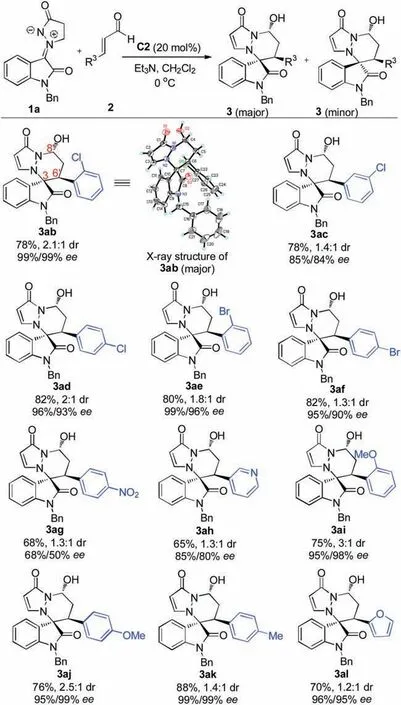
Scheme 4.Scope of α,β-unsaturated aldehydes 2.General reaction conditions: 1(0.20 mmol), 2 (0.30 mmol), C2 (0.04 mmol), Et3N (0.04 mmol), CH2Cl2(2.mL),0Isolated yields for two diastereomers;dr values were determined by 1H NMR spectroscopy; ee values were determined by chiral HPLC analysis.

Scheme 5.Gram-scale experiments.
In summary, we have presented the first example of enantioselective C-N-N[3+3]annulation of isatin N,N'-cyclic azomethine imines with α,β-unsaturated aldehydes by employing the chiral secondary amine as catalyst.A wide range of highly substituted spiro N-heterocyclic oxindole derivatives were synthesized in good yields(up to 91%)and good to excellent enantioselectivities(up to >99% ee).The present approach is a supplement to the previous methods for the diversity-oriented synthesis of biologically crucial enantioenriched spiro N-heterocyclic oxindole derivatives in high efficiency.

Scheme 6.Proposed reaction pathway.
Declaration of competing interest
The authors declare no competing financial interest.
Acknowledgments
This work is supported by the National Natural Science Foundation of China (No.21572053) and Opening Project of Zhejiang Provincial Preponderant and Characteristic Subject of Key University (Traditional Chinese Pharmacology), Zhejiang Chinese Medical University (No.ZYAOX2018029).
Appendix A.Supplementary data
Supplementarymaterialrelatedtothisarticlecanbefound,inthe online version,at doi:https://doi.org/10.1016/j.cclet.2020.06.010.
杂志排行
Chinese Chemical Letters的其它文章
- Quantitative assessment of rhodamine spectra
- Copper-cobalt-nickel oxide nanowire arrays on copper foams as self-standing anode materials for lithium ion batteries
- Design of activatable red-emissive assay for cysteine detection in aqueous medium with aggregation induced emission characteristics
- An aqueous zinc-ion hybrid super-capacitor for achieving ultrahigh-volumetric energy density
- Assembly and packing models of [Ti6Co12] ring based on the titanium-capped cobalt clathrochelates
- A stable Co(II)-based metal-organic framework with dual-functional pyrazolate-carboxylate ligand: Construction and CO2selective adsorption and fixation
